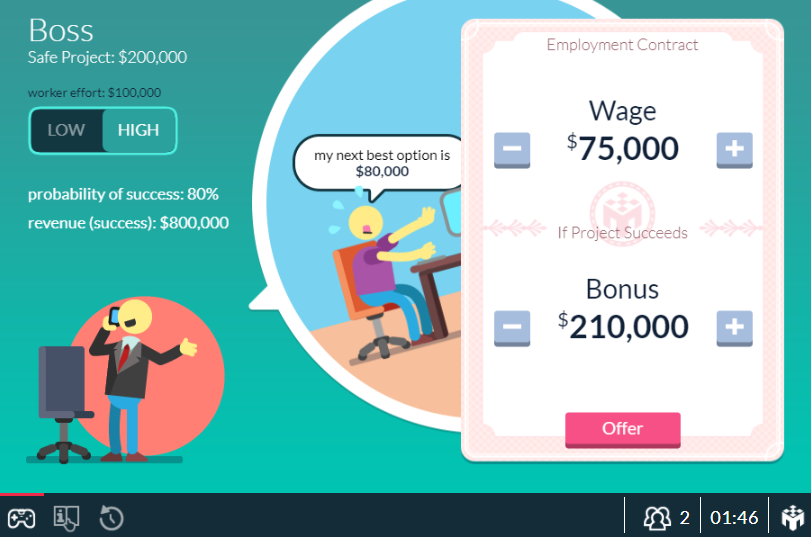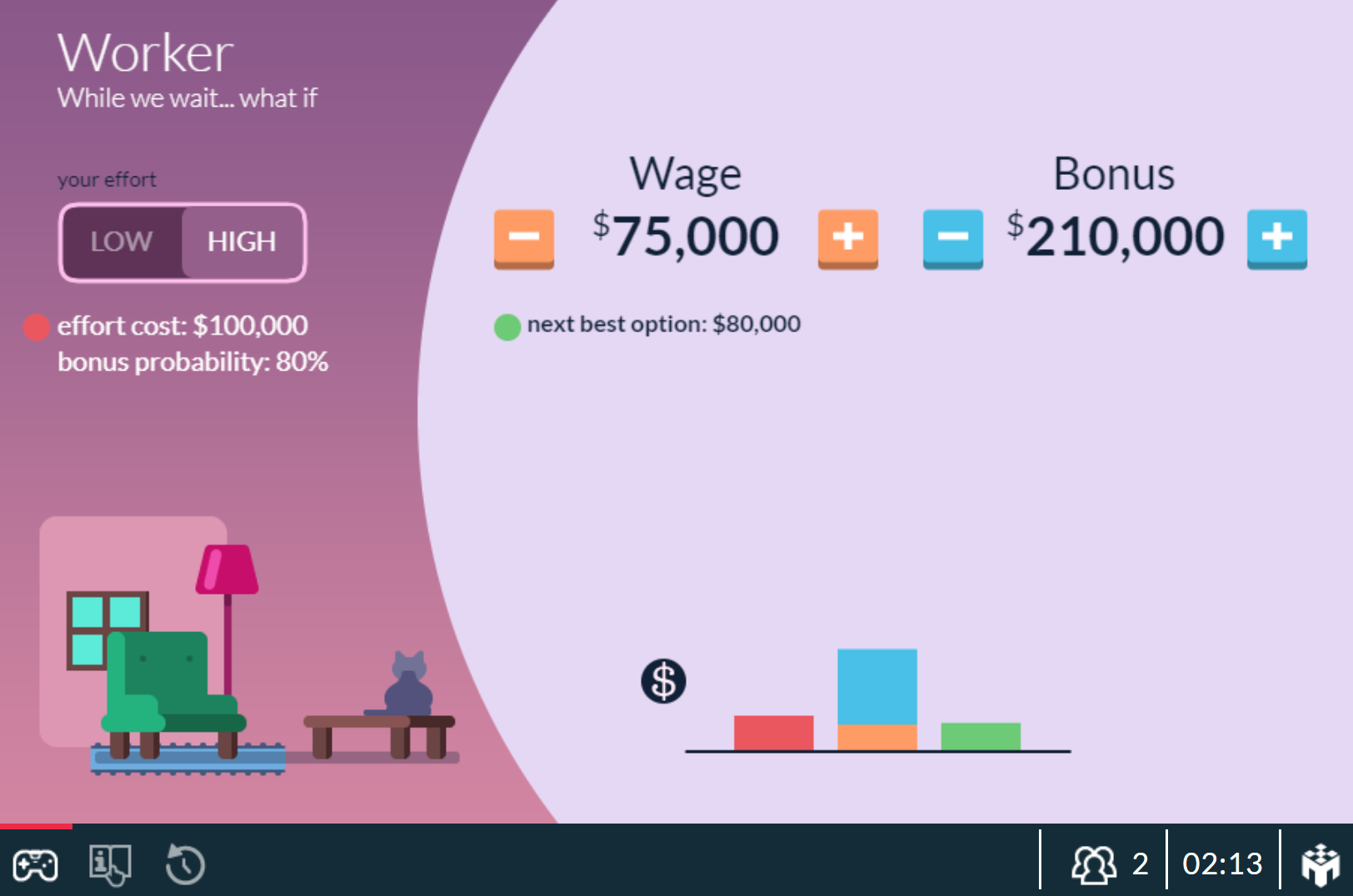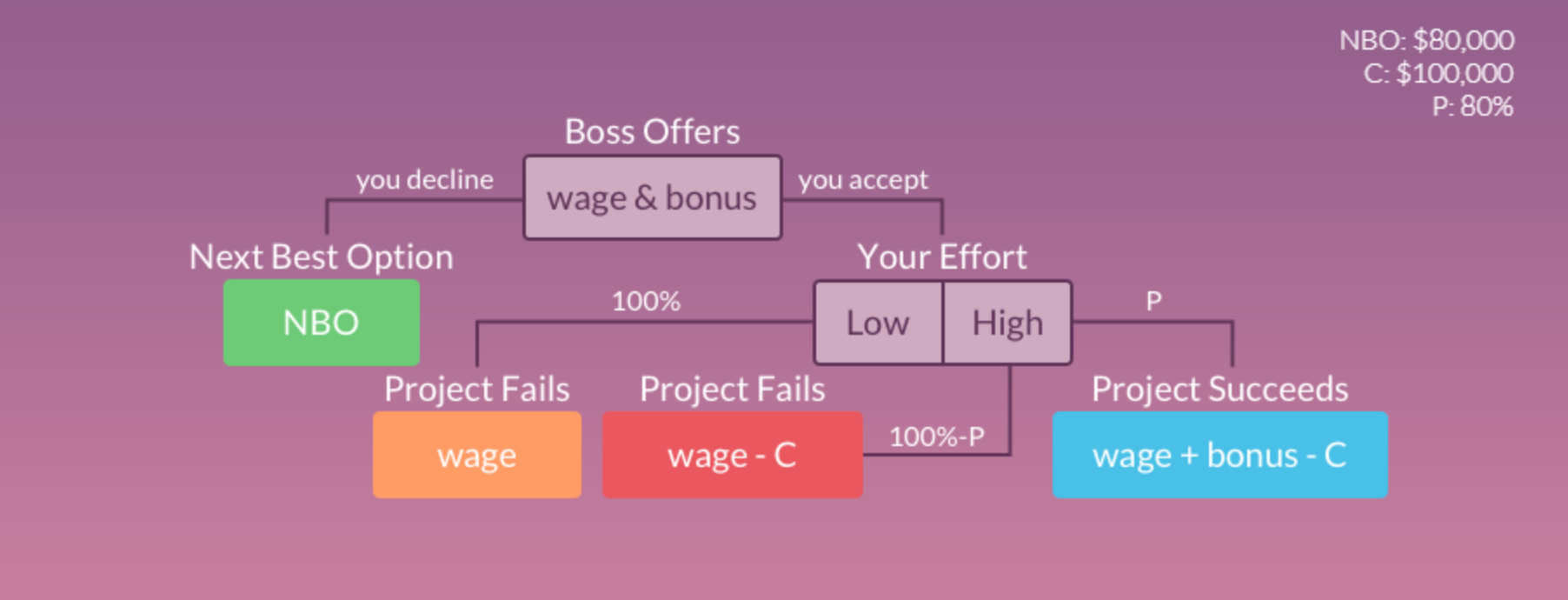Work or shirk?
While writing this blog on a Swiss train gazing out of the window at a white winter wonderland, I am contemplating about how much I miss being with my colleagues physically at our company’s headquarter in California. At the same time, I need to admit that working remotely also offers its conveniences. Indeed, for many employees as well as companies, the vision for the post-COVID future is a model that combines remote work and office time.Many studies highlight the positive impact of the hybrid way of working on employee’s health and productivity. However, it is obvious that the remote environment amplifies the informational asymmetry between workers and their supervisors. Working for MobLab, I can not think of a better way to bring the phenomenon of asymmetric information and moral hazard in economics across to my students than having them interact as boss-worker pairs in our Principal-Agent game.
In this game, the boss can pursue either a safe project with a certain revenue or a risky project with a higher revenue depending on its success or failure. In order to pursue the risky project, the boss must hire the worker, who herself has a safe alternative offer as well. Each round the game proceeds in two stages. First, the boss proposes a contract composed of a fixed wage and a bonus to the worker. Second, the worker decides to accept or reject that contract taking their next best alternative offer into account. If the worker accepts the contract, she then chooses between exercising high or low effort. Naturally, high effort is more costly to the worker, but also results in a higher revenue if the risky project succeeds.

The best way to expose the principal-agent problem is to first play the game with complete information in which the boss is able to monitor and reward the worker according to her effort level followed by a round under incomplete information where the boss is only able to award the bonus based on the project’s success. In the latter, the key for mutual success is offering a contract structure that exceeds the worker’s next best option and makes it unattractive to shirk at the workplace (i.e. exercise low effort).

In the next stage, the worker considers her offer taking into account her next best option (NBO), as well as the cost of exercising high effort (C), and the probability of the project to succeed (P). Setting the game up for multiple rounds, gives both students sufficient time to calculate their expected payoff and converge to mutually agreeable terms. You also have the option to enable chat to allow the two parties to directly communicate during this process. By negotiating a smart contract structure, students discover an economic and incentive-compatible solution to overcome the worker’s moral hazard and converge to an outcome that is beneficial for both parties.

The number of employees working remotely will continue to grow in the near future. A thorough understanding of the challenges and hazards in this environment is key for the next generation of employees and employers. With MobLab’s Principal-Agent Game your students discover mechanisms to address the problem of informational asymmetry ensuring that employees and employers will continue to benefit from the new work model.

